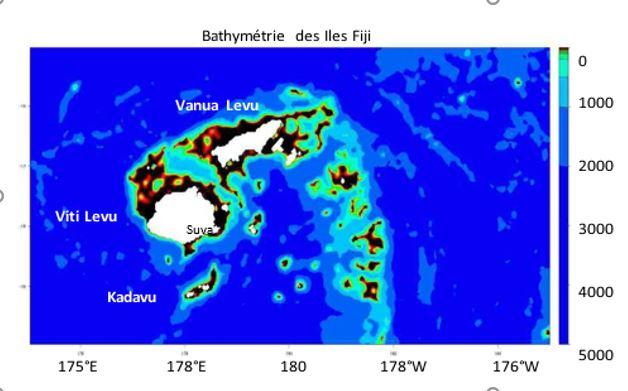SOKOWASA 2022
| Type | Oceanographic cruise |
|---|---|
| Ship | Alis |
| Ship owner | IRD |
| Dates | 19/03/2022 - 07/04/2022 |
| Chief scientist(s) | DUPOUY Cécile  |
INSTITUT MEDITERANNEEN D'OCEANOLOGIE (UMR 235 MIO) - NOUMEA Centre IRD de Noumea 101 Promenade Roger Laroque BP-A5 98848 Noumea Cedex |
|
| DOI | 10.17600/18002025 |
| Objective | The objective of the cruise was to improve the knowledge of dissolved and particulate organic elements and their relationship with planktonic phyto- and zooplankton organisms under continental forcing, in this case the Rewa River plume in southern Fiji. It also aimed to understand the link between the oceanic hydrodynamic structure and the spatial distribution of carbon and nitrogen fluxes, which determine the fisheries richness and coral resources of a key area of the Fijian archipelago. The specific objectives were to:
Including two 4-day transits between New Caledonia and Fiji (unable to dock in Fiji due to Covid constraints) the network of biogeochemical measurement stations including carbon and nitrogen fluxes, and glider transects (100 km round trip in 5 days), were carried out from March 27 to April 2, 2022 between the Great Astrolabe Reef of Kadavu Island in the south and the limit of the coastal waters of Viti Levu in the north (between 18°39S, 178°24E and 18°13S, 178°35E).
Several miniFluos (e.g. 3 on the SeaExplorer) allow the detection of 6 fluorophores in the UV range plus CDOM and chlorophyll. The optical and biogeochemical measurements at the 19 stations framing the 0-300 meter glider section allow to recompose the three-dimensional structure of the plume south of Fiji and to describe the plume extension during low rainfall.
The cruise demonstrated the feasibility of using mini-fluorescence sensors (Mini-Fluos) to understand the environment of lagoons and islands in the South Pacific, allowing the interpretation of satellite images of water color in South Fiji. In the natural offshore environment, the coupling of real-time observations (satellite/glider) allows to understand biogeochemical interactions between small and medium scale physical structures and biological functioning in South Fiji. The fluorescence matrix obtained is characteristic of the DOM and its high frequency spatio-temporal variations in South Fiji.
This first cruise exploring the spatio-temporal variability during exceptional periods of low rainfall (La Nina episode) should be complemented by another cruise during normal periods of high rainfall with a larger plume in South Fiji. The cruise also raised awareness of global change in the Pacific and the vulnerability of the coastal ocean environment to global change. |



